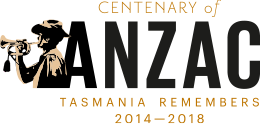Nursing in World War I

Patients under the verandah at the 3rd Australian General Hospital (AGH), Egypt, 1916. Australian War Memorial P02900.001
Nurses who served in World War One were exposed to the physical and mental strain of dealing with the huge number of casualties from the battles. Once a nurse enlisted, they had no choice but to serve for the duration of the war unless they got badly injured or married.
More than 3 000 Australian women served as nurses during World War One.
Most of the nurses served with the Australian Army Nursing Service, although some served as Royal Australian Navy Nurses and some served with allied organisations such as the Red Cross and Queen Alexandra’s Imperial Military Nursing Service.
Nurses embarked on the first convey of ships that sailed to Egypt in November 1914.
Those stationed on hospital ships received the wounded throughout the Gallipoli campaign in 1915. Nurses also cared for the wounded on hospital camps at Alexandria and Malta and later, at Lemnos Island.
Conditions on hospital ships ranged from very difficult to impossible due to a lack of staff and medical provisions. Medical facilities soon became overwhelmed with the wounded and dying each time there was a major battle.
Lemnos was also inadequately equipped and under-staffed. Nurses stationed at Lemnos were housed in flimsy tents in freezing conditions and gale-force winds, and were forced to contend with a lack of food and dysentery while trying to treat the masses of wounded.
The conditions on the Western Front were also bad for the nurses and medical staff. The nurses stationed at casualty clearing stations in France and Belgium sometimes faced dangerous circumstances and were exposed to gas and bomb attacks.
Nurses also served in base hospitals behind the lines and in England.
In addition to those on the Western Front, Australian army nurses also served in India, Mesopotamia and Salonika. These postings meant isolation, nursing people of other nationalities, and no outings to Paris or London when on leave.
Life after the war
Many nurses and women volunteers never recovered from the physical and emotional stresses of wartime service.
The experience of working during the war gave many nurses new confidence in their abilities and skills. During the war, some nurses received training and opportunities to perform roles previously reserved for men, such as surgery and administering anaesthetics.
Reference
Frances, Rae, Women’s Mobilisation for War (Australia), International Encyclopedia of the First World War.



